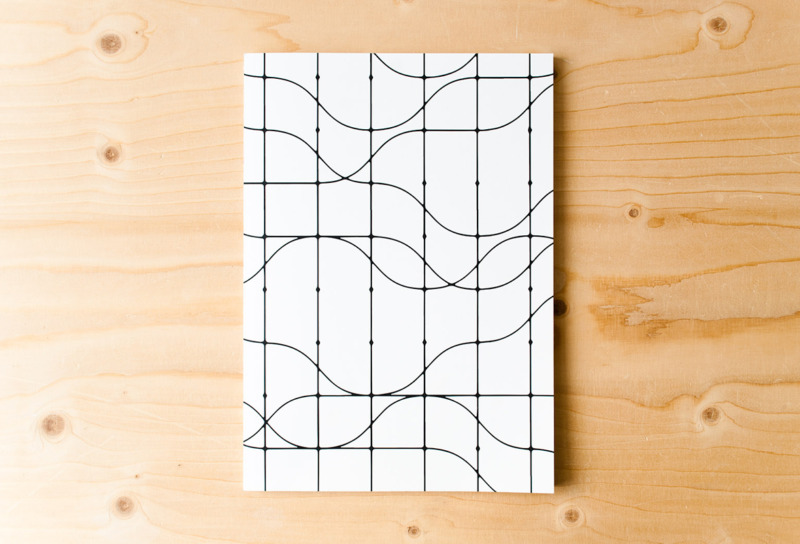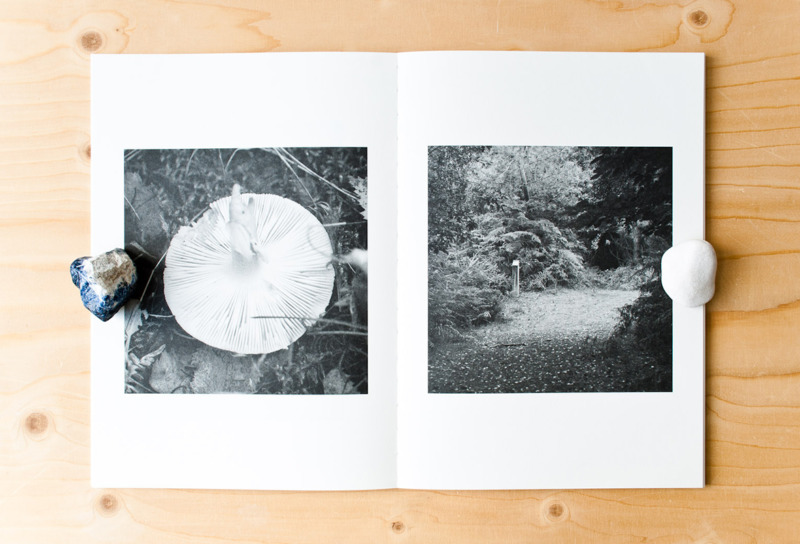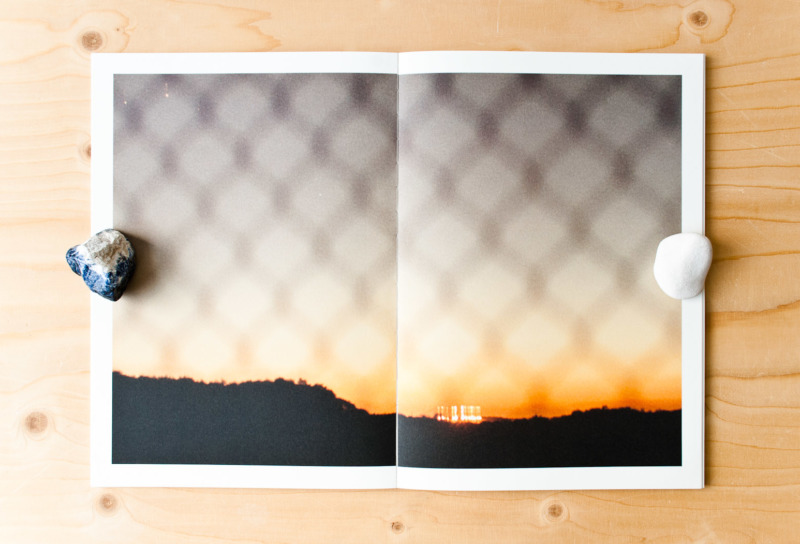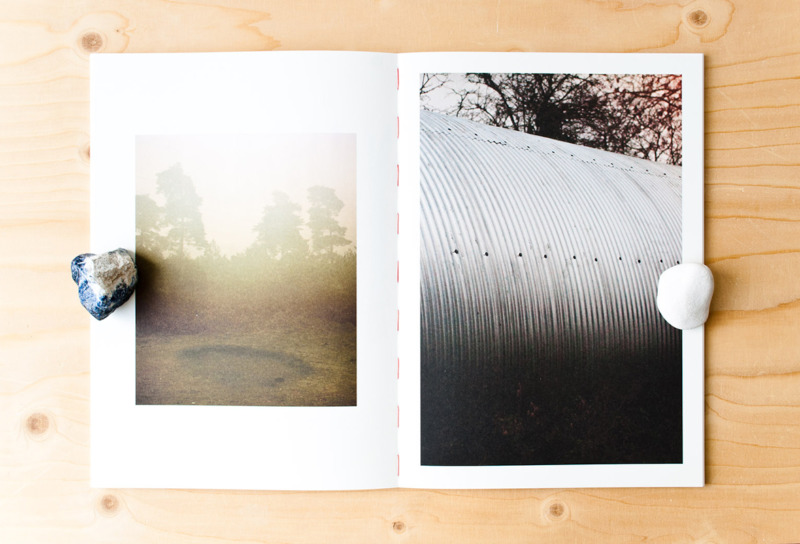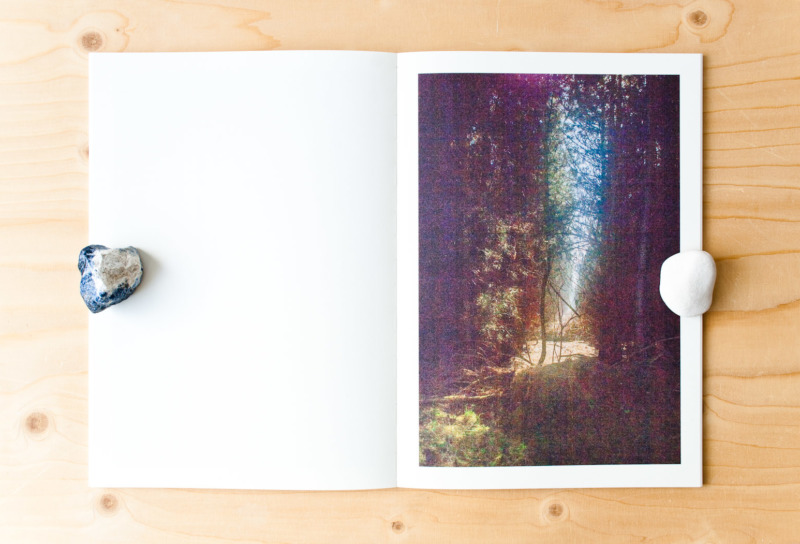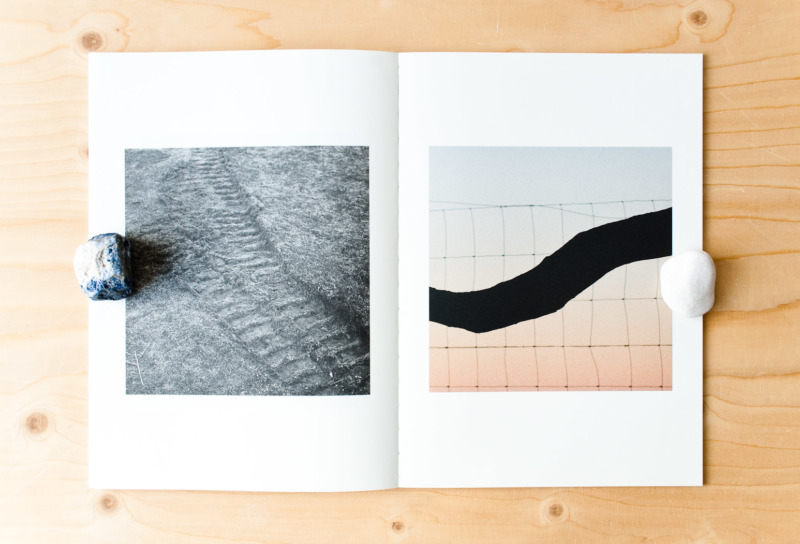Alex F. Webb – BLEU
Book spreads courtesy of the artist
BLEU by Alex F. Webb (WEBB, 2015), BUY
Why we believe what we do is often hard to fathom, but the desire to believe can still be irresistible, blinding us to the most obvious realities. When faced with a situation that seems, on the surface, inexplicable we turn to belief. In many ways, Alex F. Webb’s BLEU is about the strategies (especially photographic ones) that we employ in order to make sense of the world we live in. The subject of the work is ostensibly the sighting of some unidentified flying objects in Suffolk, England and he marshals an impressive array of materials, ranging from documentation to his own staged photographs to suggest something, though by the end we are not really any the wiser as to what happened (or perhaps, didn’t happen). Webb’s work here is a good example of the genre we might call pseudo-documentary, which is more concerned with the conditions of how a story is told than its truthfulness, but still uses the conventions of the documentary tradition as a point of departure.
Photography can give substance to our beliefs, and specific types of photographic imagery are more assured in this evidentiary role than others. Ironically, it is often the case that a photograph which appears to be unmediated, showing the technical faults or blur or grain, for example, seems more truthful than a more studied picture and Webb makes good use of these visual vernaculars throughout the book, which is basically a massed stream of imagery with no obvious narrative; evidence works by the accumulation of different viewpoints. The effect is suggestive, but hardly conclusive. There is, at any rate, no way of knowing what happened back in December 1980, if anything actually did. But the point of the work is surely that some people do believe something did, whether a UFO or some kind of military landing and Webb wants to give a sense of that belief visually, with all its ambiguities intact. He makes use of a shifting vocabulary that ranges from forensic or scientific type imagery to the sort of ‘close encounter’ picture already mentioned to more impressionistic interludes that help a rather claustrophobic tone.
There is a sense in which the book is as much about manipulating the effects of certain photographic styles as it is about the supposed event itself. The subject serves as a way to question the nature of memory and belief – to ask where, in all this material, this evidence, might the truth located. Implicit here is the idea that ‘evidence’ as such must be actively constructed and doesn’t merely reflect a situation; it already includes values and strategies of meaning that are, in the first instance, visual strategies and Webb plays upon this by, for example, recreating archival images showing disturbances on the ground that are supposedly indicative of a landing. The stylistic neutrality of these recreated images contrasts with both the murky reproduction of the source material and the mix of other visual styles that surround them. The point is that all these styles fit into a structure of meaning that makes them comprehensible; seen without that structure, as they are here, their evidentiary value becomes malleable, it can be pulled in any number of directions and be used to support any belief.
The construction of the book itself astutely reflects this open-endedness, with its exposed bindings and graph cover that seems to have no real beginning or end (that is, no defined informational function, it just hints at the structures of information, but doesn’t make them useful). The rather dense accumulation of imagery is also significant. Seeing something from a multitude of perspectives should, in theory, give a more complete picture, but the effect in BLEU is largely the opposite, it multiplies the confusion, we can’t entirely tell what matters from what doesn’t, what is evidence and what is speculation – in short, can’t tell what happened from what we want to believe. Here Webb has perhaps gone too far in depriving us of a narrative thread and the build-up of pictures, of points-of-view, eventually becomes difficult to navigate, there isn’t always enough for the viewer to hold on to. It would have been useful had he given us a slightly clearer path to follow, even if this seems to contradict the purpose of the work.
For all that though, and apart from the apparently bizarre subject matter, there is still a significant idea at work here, or rather, a significant question – what, finally, is the difference between knowing and believing? Maybe, in the end, all knowledge is a kind of belief, an interpretation based on available models; quantification alone is not the same as knowledge, because however finely we grade and scrutinize the evidence, truth escapes our grasp. And yet, Webb does more than just collate evidence, he assembles the material to create a mood of uncertainty, of doubt, a space in which we can’t be sure of what we’re seeing. His use of distinct visual styles is, among other things, a way of underscoring that ambiguity. The point is not to tell us anything about what might or might not have happened in a particular corner of rural Suffolk, but to determine how the uses of photography shape (and constrain) the beliefs we have about the world.

